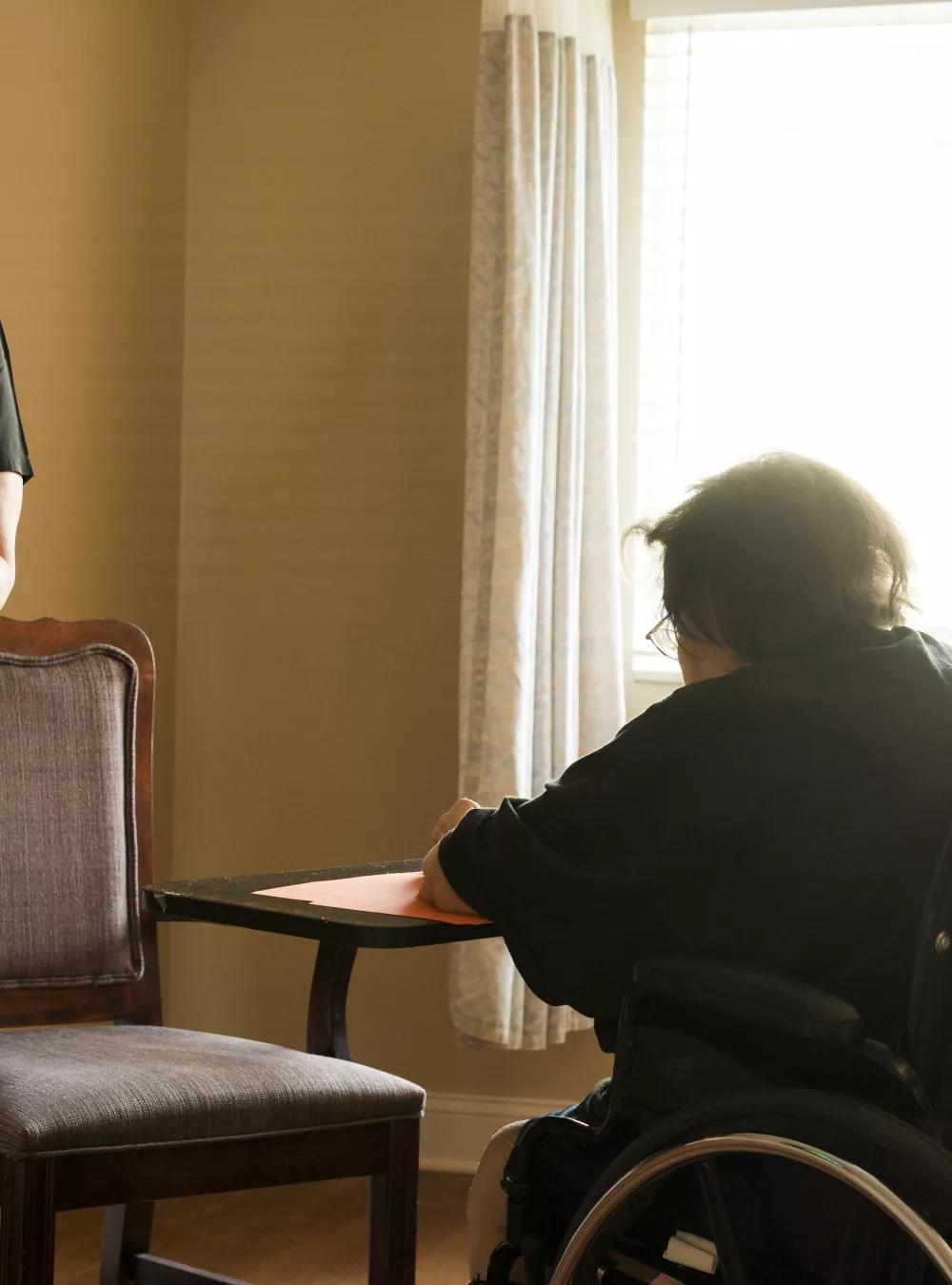UVA Health and MITRE partnered to develop COVID Rapid Response Kits—a critical new tool for fighting the pandemic in Virginia. These kits, expanded telehealth capabilities, and remote monitoring are improving care for many vulnerable residents.

UVA Health and MITRE Help Keep At-Risk Populations Safe from COVID
Introduced over two decades ago, telemedicine has long been an underused resource for healthcare in the United States. But the COVID-19 pandemic now makes telehealth the preferred choice—sometimes the only choice—for many people.
MITRE and the University of Virginia (UVA) are on the front lines of using telehealth to connect patients and medical providers virtually. The work helps keep vulnerable populations safe from the virus while also providing care to those who need it. The initiative grew out of our joint MITRE@UVA Health Learning Lab at the UVA School of Medicine, where our experts work side by side with providers in a clinical systems engineering setting.
The need for telehealth capabilities couldn't be greater but there are barriers to success. Among the most challenging aspects of the COVID-19 response are assembling and deploying medical kits where they're needed and training non-medical personnel as well as clinical staff at partner locations to use them. Like most states, Virginia has both densely and sparsely populated areas and varied network and bandwidth capabilities.
"UVA Health came to us proposing we work together to design and deploy COVID Rapid Response [CRR] telehealth kits," says Cj Rieser, Ph.D., MITRE's UVA site partnership leader. UVA staff knew that treating COVID-19 patients across the state would require establishing telehealth capabilities in areas and facilities that may not have used them before.
The initial version of the CRR telehealth kits include a thermometer, pulse oximeter, blood pressure cuff, and a stethoscope. The kits require a broadband connection for a live data feed for communications between patient and doctor through a computer or mobile device. More kits are being deployed as new outbreaks are identified.
UVA’s collaboration with us on designing, acquiring, distributing, and monitoring the kits and their use drew on MITRE's experience in systems engineering, decision support, data analytics, mobile cybersecurity, acquisition operations, and clinical expertise.
COVID-19 poses challenges that require creative solutions for remote sensing, distributed surveillance, early detection, resource allocation, and resiliency planning. Since MITRE is using artificial intelligence to solve similar data and analytic challenges for national security, it was a natural fit to pivot this expertise to tackle the pandemic.
"We're trusted partners," Rieser says. "We have a long history of being ahead of the curve in knowing what needs to happen in operational environments. Our collaboration brings together expertise in engineering and medicine."
Our UVA partners agree. "In just four short weeks, our partnership enabled a rapid response process for vulnerable populations," says David Cattell-Gordon, director of operations at the UVA Center for Telehealth. "This collaboration has already played an important role in helping save the lives of frail elderly during a major outbreak in skilled nursing facilities in our communities."
Creating a Telehealth Blueprint
The CRRs are only one component of UVA's overarching goal of building a statewide blueprint and operational prototype for expanding telehealth services. Ideally, it could be a model for other states to emulate.
The blueprint focuses on two main factors: communicating with isolated patients and delivering telehealth facilities and services to remote, at-risk groups. This approach enables medical teams to deliver ongoing care while continuing social distancing to reduce the load on health systems around the nation.
"We're using technology and data management innovations to improve medical care operations," Rieser says. "MITRE's goal is to help UVA Health make the best decisions they can with the resources they have. With smarter data collection that supports advanced prescriptive analytics, we can better anticipate future disease outbreaks and potential recurrences of COVID-19.
"Through our combined efforts, we're improving medical outcomes and expanding Virginia's telehealth capabilities."
Building a Joint Learning Lab through Academic Engagement
MITRE's UVA site launched in 2015. Located on the grounds of the UVA School of Medicine and UVA Medical Center, it quickly became a hub for collaboration and experimentation. It includes a robust connected healthcare ecosystem that nurtures investigation, safety, and assessment for all aspects of healthcare operations.
The MITRE staff at the site has contributed to several initiatives that helped inform the CRR effort such as developing decision support tools for warfighters, first responders, and others.
"Together, we've built a rich learning environment. It includes a mobile telehealth lab, a shared analytics lab, and a clinical collaboration lab," Rieser says. It incorporates expertise from UVA's medical school and a diverse group of MITRE staff.
John Griffith, MITRE's deputy UVA site lead, concurs. "We have a tremendous amount of knowledge and experience, and we can reach back for expertise in many areas.
"Plus, since we're co-located with the UVA medical school and hospital, we have a clear understanding about how UVA Health works. Our response to the pandemic is already showing that together we can accomplish great things."
—by Kay M. Upham